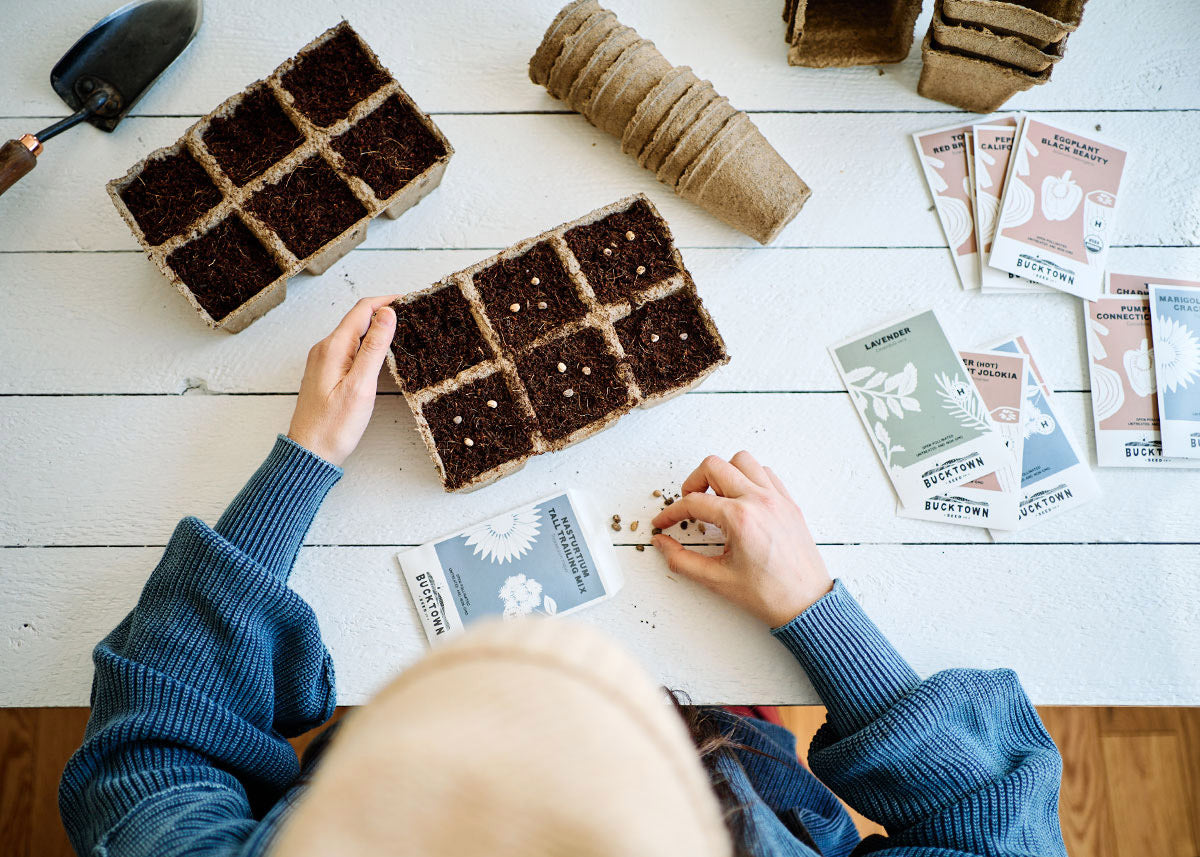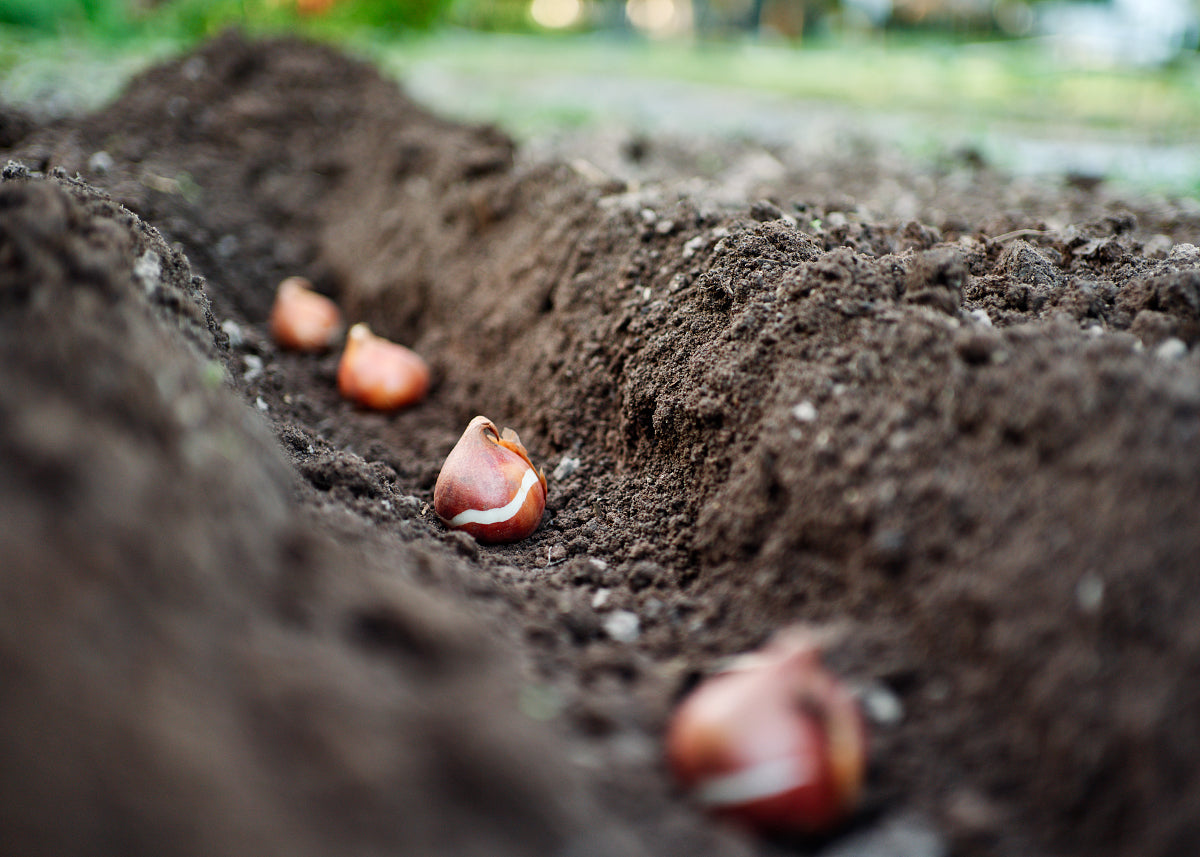If you've ever wondered how to grow garlic in your garden, you're in the right place! Growing your own garlic is not only fun but also rewarding. In this guide, we'll take you through the simple steps to help you get started on your garlic-growing journey, whether you're a seasoned gardener or just getting your hands dirty for the first time. So, grab your garlic bulbs and let's explore the world of growing garlic in your very own garden. Your dishes will thank you for it!
History: Garlic (Allium sativum) has a rich history dating back over 5,000 years. It is believed to be native to Central Asia and has been used for culinary and medicinal purposes throughout various cultures and civilizations. Garlic was highly regarded by the ancient Egyptians, Greeks, and Romans. Its recorded in the book of Numbers, that the Israelites, growing bored of the Manna, longed for the variety of foods they had in Egypt, including garlic and other culinary delights.

Health Benefits: Garlic is renowned for its numerous health benefits:
- It contains allicin, a compound with potent medicinal properties, including anti-inflammatory and antimicrobial effects.
- Garlic may help lower blood pressure and reduce the risk of heart disease.
- It has antioxidants that can support the immune system and combat oxidative stress.
Planting:
- Timing: Garlic is typically planted in the fall, usually September to November, depending on your location. This allows the bulbs to develop roots before winter.
- Soil Preparation: Choose a well-drained, sunny spot with fertile soil. Amend the soil with compost as its root system does not reach far, so it needs to have plenty of food and water nearby.
- Bulb Selection: Break the bulbs into individual cloves, leaving the papery skin intact.
- Planting Depth: Plant cloves 2-3 inches deep, with the pointed end facing up / blunt end down. Space them 4 to 6 inches apart in rows, and space rows about 12 inches apart.
- Mulching: Cover the planted area with a layer of mulch (straw, leaves and/or grass clippings) to protect against freezing or heaving out of the ground. Mulching also encourages worms and suppresses weed growth. Leave mulch in place in the spring as it minimizes weeds, preserves moisture and provides nutrients as it decomposes.

Growing Suggestions:
- Watering: Keep the soil consistently moist but not waterlogged during the growing season in spring.
- Fertilization: Spread some compost on the bed in the spring when green shoots emerge.
- Scapes: Hardneck garlic may produce curly shoots called scapes. Pinch them off to direct the plant's energy toward bulb development. Scapes can be roasted, sautéed, stir-fried and pickled.
- Weeding: Keep the garlic bed weed-free to reduce competition for nutrients.
Pests & Diseases: Common garlic pests and diseases include aphids, nematodes, and rust. To manage these issues organically:
- Remove affected leaves or plants promptly.
- Introduce beneficial insects like ladybugs and lacewings.
- Rotate garlic crops to prevent soil-borne diseases.
- Apply neem oil or garlic spray to deter pests.
Harvest & Storage:
- Harvest Time: Garlic is usually ready to harvest in mid-late summer (timing may vary based on your location) when the bottom 2-3 leaves have turned brown (stiff-neck) or the tops fall over (soft-neck & elephant).
- Lift Carefully: Use a garden fork to gently lift the bulbs from the soil. Be cautious not to damage them.
- Curing: Allow the harvested bulbs to dry in a well-ventilated, shaded area for 2-4 weeks.
- Trimming: Once cured, cut the stems to about 1 inch long and trim the roots brushing off excess dirt.
- Storage: Store garlic bulbs in a cool, dry place with good airflow. Braiding the bulbs together is a traditional storage method.
- Saving: Set aside your nicest bulbs for replanting.
By following these guidelines, you can successfully plant, grow, and harvest garlic bulbs in your garden, enjoying their rich flavor and health benefits.






